Capri is known throughout the world for its timeless charm of the ancient world and the modern world, mentioned in movies, and TV series, it is in the collective imagination for “VIP” vacations. A destination for international tourism in every season, it is in summer that Capri explodes in its enormity: already famous and declaimed from the time of the Greeks and Romans, it is even linked to the myths of theAeneid and theOdyssey with Ulysses who, in front of the splendid shores of Capri, met the Sirens who, bewitching him, would never let him leave, and for this reason he had his ears tied to the mast of the ship and plugged with wax to resist the hypnotic song of the Sirens. The Roman emperors Octavian Augustus and Tiberius also resided here. And that alone would be enough to decide to make a trip there. There are plenty of ferries to reach it, and the atmosphere of the vacation to be experienced begins even before disembarking amidst the blue sea, with the Amalfi Coast in the distance and the Sorrento Peninsula just a short distance away. Here are ten stops not to be missed during a trip to Capri.
The island, in the Gulf of Naples, is administratively divided into two municipalities: one is Anacapri, and the other is Capri, the main center of the island, which in total makes almost 14,000 inhabitants equally divided between the two municipalities. The port of Capi is an incessant bustle of tourists from all parts of the world who covet this trip where often the first thing they want to see is Piazza Umberto I: what is “La Piazzetta” to everyone internationally. As small as the village itself, it is overlooked by bars with tables that fill it in addition to the Town Hall, making it a summer living room where one can meet famous people sitting around drinking and talking. From the arcades and arches between one building and the next, one winds along the built-up area made up of pastel colors and flowers where restaurants, hotels and boutiques rule the day. Via delle Caramelle has little to envy Via Tornabuoni in Florence or Via Montenapoleone in Milan in terms of density of luxury stores. Manicured streets and palaces illuminated by elegant plays of light to offer visitors a destination at the highest level of Italian hospitality. Going all the way down Via Vittorio Emanuele III, one can reach the Certosa and the Gardens of Augustus, quieter and more secluded places to enjoy a little rest away from the hustle and bustle of the international jet-set. There is also no shortage of belvederes overlooking the Faraglioni. The island is jagged with cliffs that rise in height soon after emerging from the water, and the town of Capri, the borgo, is 142 meters above sea level (Anacapri is 282 m) with Mount Solaro (in the municipality of Anacapri), which can also be reached by cable car, touching 589 meters and Mount Tiberius 334 meters. There is no shortage of viewpoints, and above all there is the sheer effect of the sea, which in summer is dotted with boats and white yachts of all kinds that make it a spectacle within a spectacle. Many hotels nestled on the slopes of the island developed almost like terraced grape vines can offer enchanting little balconies overlooking the sea: in the evening by moonlight sitting and watching from above, for example, the little golf in front of the Faraglioni with the lights of the ships swinging by are worth the cost of the room.
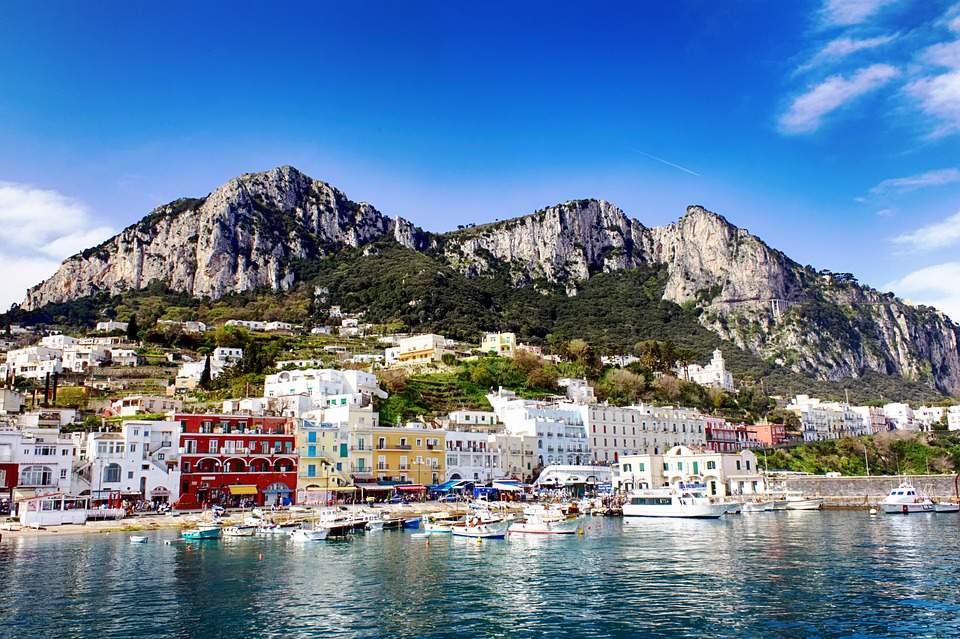
Opposite the island’s southeastern coast rise majestically and imposingly out of the sea more than 100 meters high, three rock formations that are the symbol of this island: the Faraglioni. Three rocky islets, steep rocks like arrowheads sticking out of the water, complete with names: Stella (or Faraglione di Terra, because it is joined to the mainland by a flap), Saetta (or Faraglione di Mezzo) and Scopolo (or Faraglione di Fuori). The huge Faraglione di Mezzo also has a ’hole’ underneath which you can sail (the best way to admire them is from the sea): a natural arch that forms a tunnel inside the Faraglione that is a good 60 meters long and runs through the entire Faraglione. And if you kiss down here, the two lovers will never leave each other, the islanders say. To make you understand what a marvel of nature we are talking about, suffice it to say that this cavity has a height that reaches 81 meters.

In the jagged coastline and steep walls of the island, made up of inlets and caves there is one that is world famous: the Blue Grotto. Its fame is due to the chromatic, light and shadow effects created inside, thanks in part to an underwater opening, which are reflected in the water making it crystal clear and iridescent depending on the time of day and weather conditions. The rocks under the water take on silver colors thanks to the effect of air bubbles, experts explain, which have a different refractive index than water. We are inside a karst cavity that can be reached only by a very small and low entrance, two meters by one, and by a small boat where people have to lie in it and the oars have to be pulled in. The cave is about 60 meters long, 25 meters wide and 14 meters deep. We are in the dark with the illuminated bottom radiating glow to the whole cave. A sight to be absolutely enjoyed if you go to Capri. It also acted as a nymphaeum for the Emperor Tiberius’ Villa of Damecuta, a few hundred meters away and which must have been connected by an underground tunnel that has not yet been identified: there were therefore ornaments and statues (gods and sea creatures) of which three have been found that are now preserved at the Casa Rossa in Anacapri: one depicted the sea god Neptune and the other two Triton, his son. There are also remnants of other bases that suggest that there were others lost perhaps in the seabed. What is certain is that until the mid-19th century no one ventured in here given the dense network of beliefs and legends that hovered there and made even the people of Capri stay away.
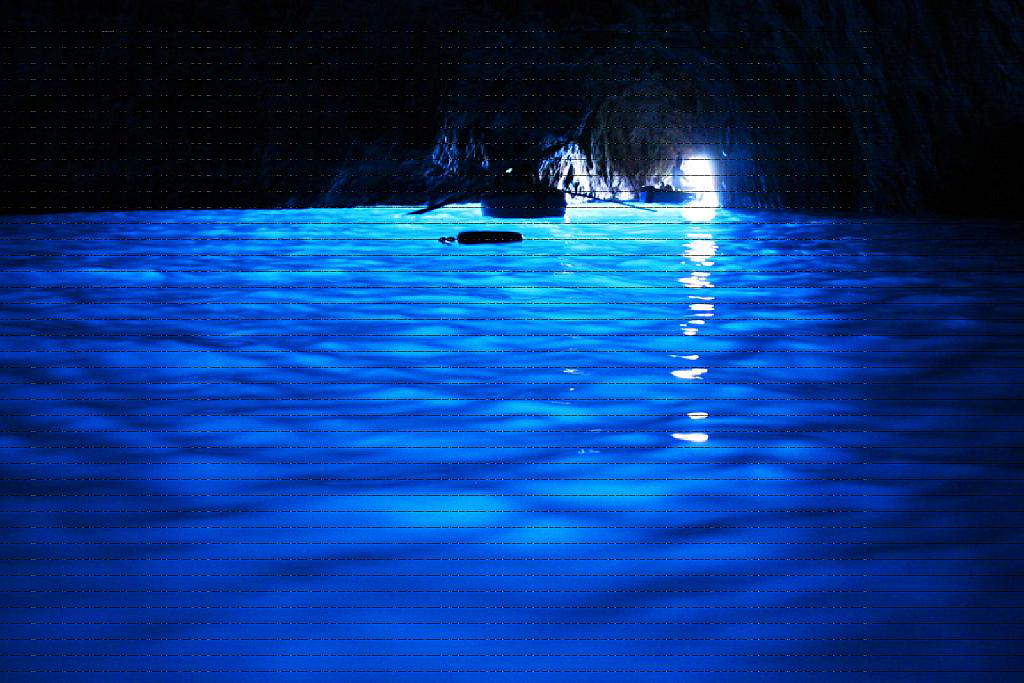
This sumptuous and majestic palace was the abode that the Roman emperor Tiberius Julius Caesar Augustus chose to rule, albeit far from Rome (although Tacitus and Suetonius relate that, on Capri, Tiberius was able to give free rein to his unspeakable vices, indulging in gluttony and unbridled lechery). Among the 12 villas he had built on the island of Capri, this is the one located on what is now called the Tiberius promontory, precisely because of this, that from its 334 meters overhanging the sea to the east of the island it strategically dominated both land and sea: from here one can observe the Gulf of Naples, the island of Ischia, Procida, and the Sorrentine peninsula. Covering an area of 7 thousand square meters and probably structured on eight levels with terraces, porticoes, inner courtyards with pools and nymphaeum, ornaments and monumental statues visible from the sea, lighthouse (used for signaling with the mainland and astronomical observations) Tiberius stayed there permanently for more than 10 years ruling the Roman Empire from the island of Capri. Halfway between a palace and a fortress, it was a structure that was difficult to conquer from the sea, not least because of the steep and craggy wall on which it overlooks and on which it is said that Tiberius threw anyone he did not like to be around below. So much so that that rock face is now called Tiberius’ Leap. On the west side of the villa was the servile quarters and on the north side Tiberius had his rooms with the loyalists and the Throne Room was in the east wing. Since the road is all uphill and to be done on foot before leaving make sure of the opening hours, which are very variable, at the information office in the small square or on the Ministry of Culture website.
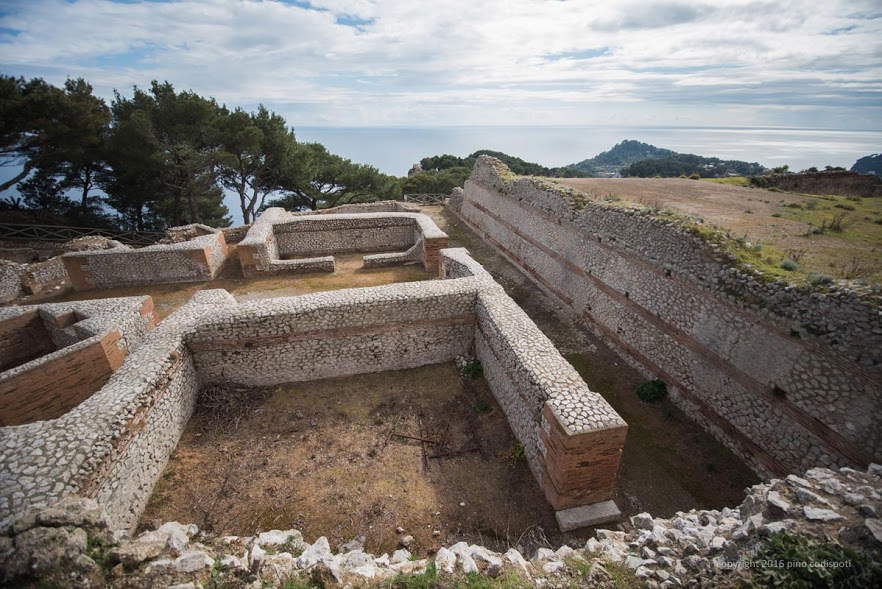
The highest point on Isola Azzurra at 589 meters high is Monte Solaro: with a 360-degree view of the island, sea and coastline ahead, it is the ideal place to admire so much beauty, with terraces equipped as solariums where aperitifs as the sun sets over the sea is an extremely fascinating experience. It’s worth it, but to walk up you need to be trained (all uphill, but well-marked and fairly easy) and it takes about 90 minutes; alternatively, you can take the comfortable chairlift (armchair open on all sides that in some places reaches 500 meters above the ground-that’s a nice ride, too!) that leaves from Anacapri’s Piazza Vittoria. The chairlift is ideal for those who want to ascend easily and then descend on foot while enjoying contact with nature, stopping at points of interest to visit such as the hermitage of Centrella: stopping points with views to photograph are not lacking.
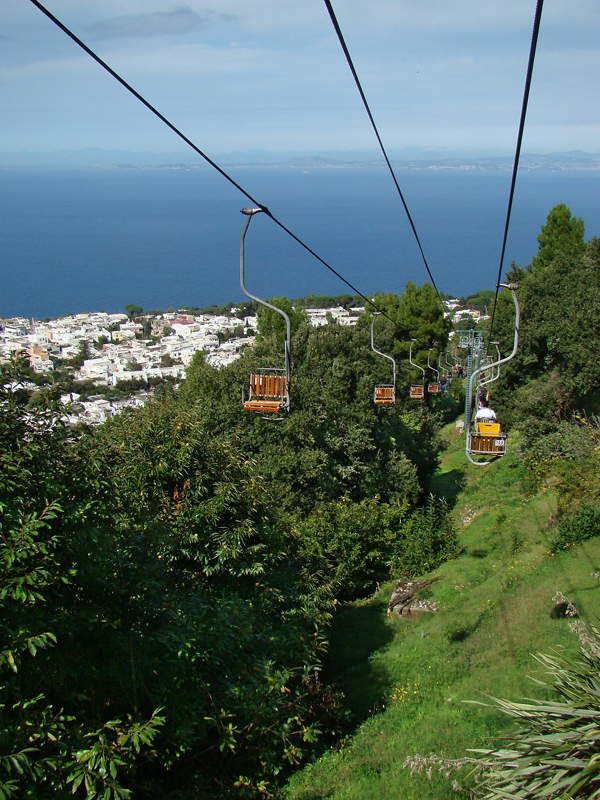
Villa San Michele houses the house museum with evidence of the life and work of Swedish physician and writer Axel Munthe, who elected Anacapri as his buen retiro in 1885. Adjectives are wasted on Capri, but all one can say is that this place is beautiful: the nature and beauty of the ancient world blended with contemporary history and art. And this living experience that was formed found voice in a book written by Munthe himself, The Story of San Michele, which was one of the first “best-sellers” in the modern world. “I want my house to be open to the sun and the wind and the voice of the sea, like a Greek temple, and light, light, light everywhere. Inside the house, the contrast between black and white reigns. In the loggia, the colors of the garden take over, along with the ever-changing hues of the blue Mediterranean. Here one begins to sense the Greek temple that speaks of Munthe,” he wrote in the book. Villa San Michele’s garden begins in the shade of the wisteria of the pergola, culminates sun-drenched on the terrace of the Sphinx, and finds its conclusion along an elegant cypress avenue. Above all, however, Villa San Michele houses an important art collection, most of which is of Roman, Etruscan or Egyptian origin. Munthe himself chose the objects for their beauty as well as their symbolic significance. One of them is the legendary 3200-year-old sphinx.
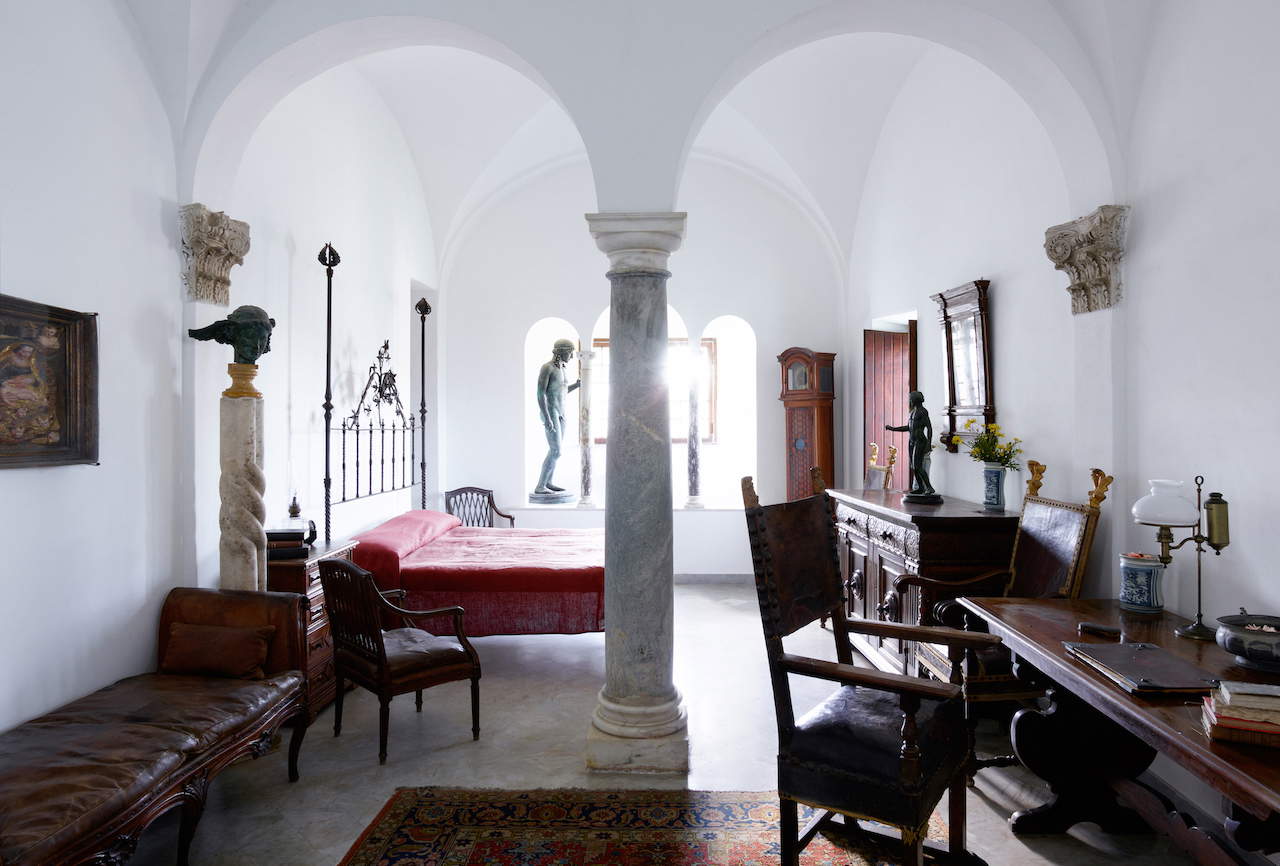
Among the things that make this island beautiful to experience are undoubtedly the 6-seater uncovered cabs, and it is a classic that tourists to go to Anacapri rather than public transportation use these cabs so as to make themselves not just a ’trip’ but a nice excursion all over the island. Anacapri, which occupies the western part of the island, has a vast plateau but also the highest peak, Monte Solaro. The town center is 286 meters above sea level and sits on a wide, verdant plain to the west of Solaro: the panorama, flora and fauna seem so different from Capri that it seems to be in the parallel and more livable dimension of the mundane eastern part of the island. Capri is certainly more elegant, worldly and chic in its renowned liveliness, devoted to “fun” and status symbols. Anacapri is very charming in its naturalness and somewhat wild, as well as less crowded: the same things you buy or eat on Capri can be bought and eaten here, but with more tranquility and less chaos, and with lower costs. A tour of Anacapri among the small craft stores that flank the windows of the high-fashion boutiques and its alleyways should be done.
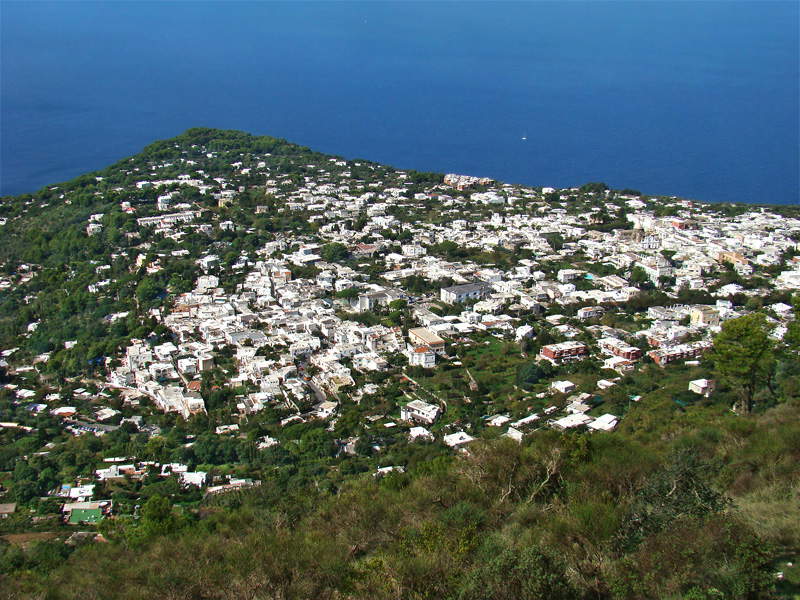
The grandiose Charterhouse of San Giacomo, founded in Angevin times, is perhaps the oldest building on the island. The Carthusian monks arrived here in the second half of the 1300s and it has been preserved with great beauty in its contemplative silence. The building consists of three bodies, one with the pharmacy and church for women, outside the main building, a body for the lay brothers and guests, as well as stables and workshops, and finally the cloistered monastery, with cells arranged around the Great Cloister and reception rooms around the Small Cloister.
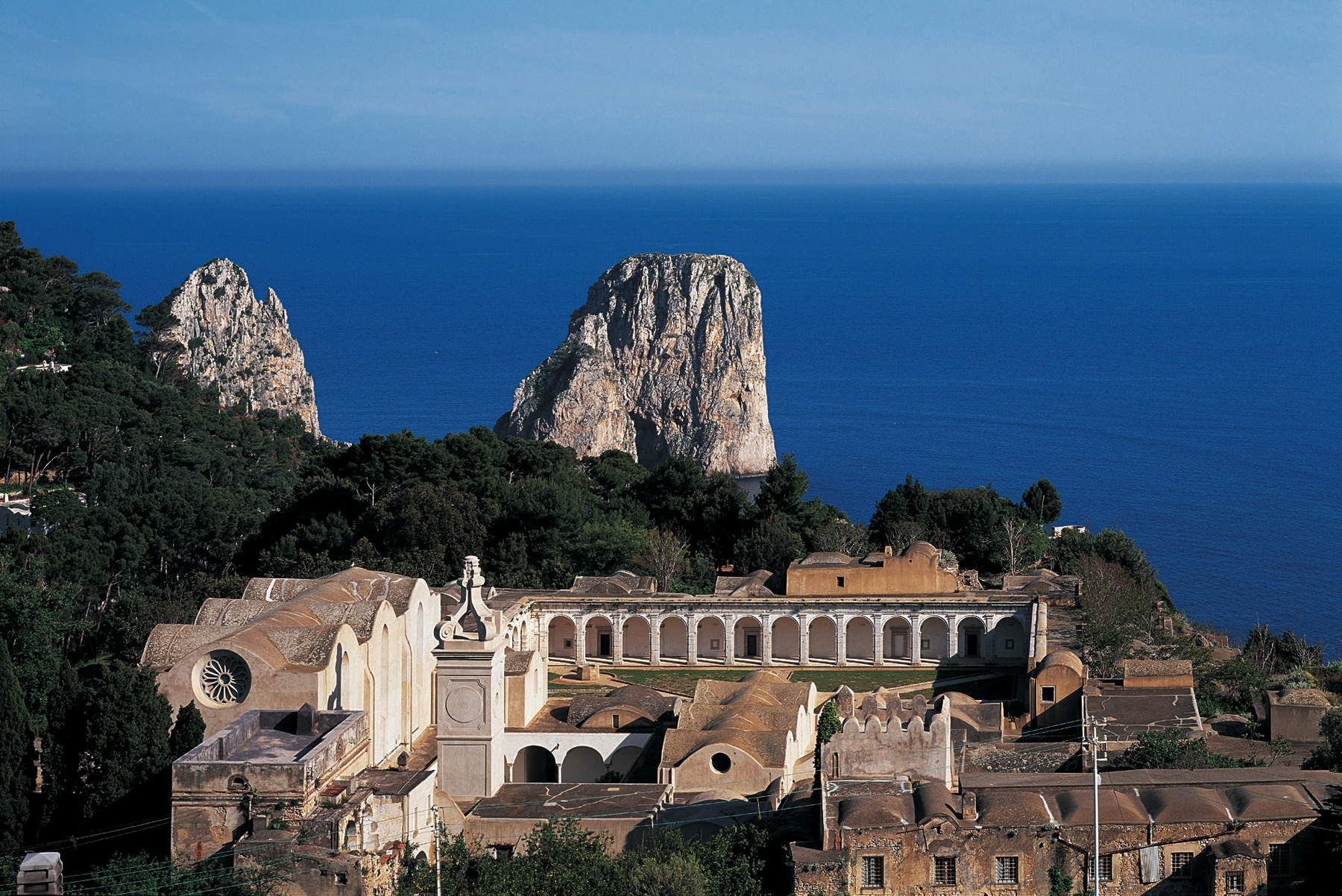
Villa Lysis, but actually called “La Gloriette,” is an almost deliberately hidden gem just below Villa Jovis, an example of Art Nouveau style with neoclassical references in ideal dialogue with the home of Emperor Tiberius. It was a loving home of the French poet Édouard Chimot, who moved here from Paris, electing Capri as his magical place where he could write and live out his love that had caused a scandal in France. Built in 1905, surrounded by creepers and living vegetation, it retains the romantic imprint that made it an “enchanted hermitage” as desired by Baron Jacques d’Adelswärd-Fersen, who would later inhabit it. Here contemplation, solitude, discretion, culture, art nature made it a gathering place for artists and intellectuals. The entrance looks like that to a classical temple complete with staircase and rows of columns in the Ionic style. it. The gilding of the hall hints at Klimt, Olbrich and the “Viennese secession.” It is a special place where elements drawn from modern and classical European architectural culture are harmoniously blended in a fascinating setting full of symbolic references, opulent and luxurious but also elegant. From the interior halls to the gardens to the terraces, every detail is well taken care of: from mosaics to painted tiles of varied colors, geometric shapes adorn the walls and floors. It is places like these that make the Island of Capri a place suspended in time full of charm and mystery.
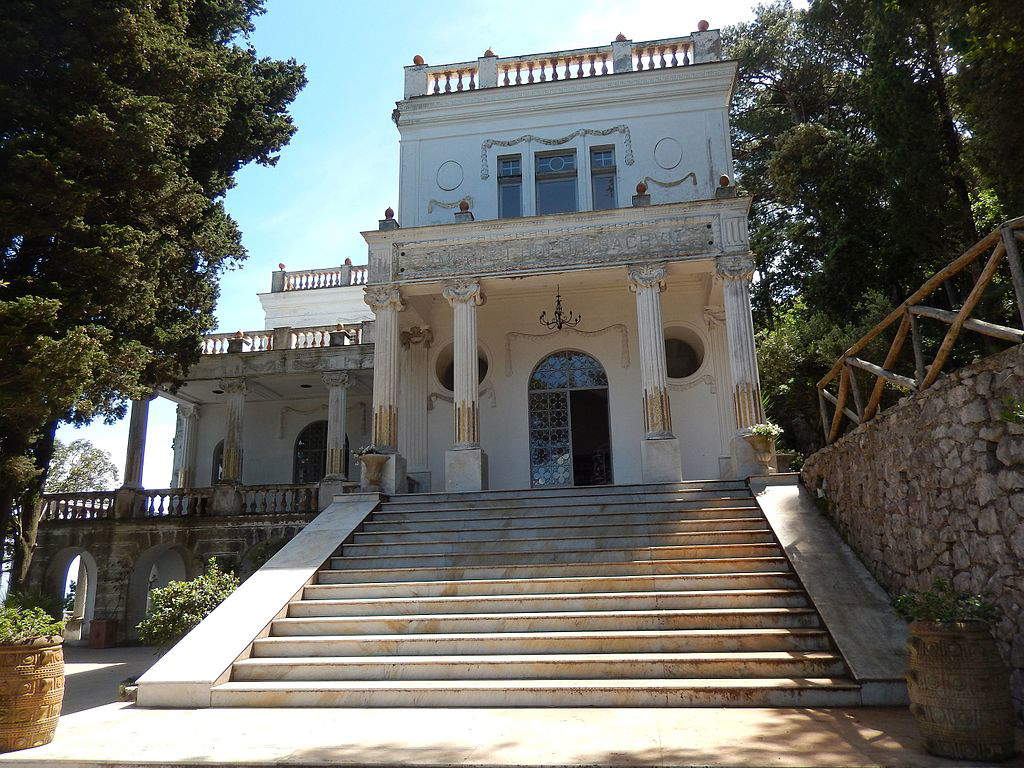
The Port of Marina Grande is where all boats dock to get to the Island. There are many shipping lines, ferries and guided tour boats using the harbor making it an anthill at all hours. Already touristically transformed to accommodate tourists for needs on the island with the houses that once belonged to sailors, now renovated and cared for, colorful and picturesque, today bars, agencies, restaurants and hotels. We are located in the municipality of Capri in the northern part in front of the mainland and we also have a seaside resort with facilities and beach. From Marina Grande you can also walk to Anacapri via the 921 steps of the Scala Fenicia. Marina Piccola, on the other hand, is the small southern port (warm and not very windy even in winter) at the foot of Monte Solaro. Here there is an ancient landing place of Roman origin and the famous Scoglio delle Sirene. It owes its modern fame to several foreign artists who portrayed it and whose paintings are exhibited in the world’s most famous museums. From Marina Piccola it is possible to walk to the Charterhouse and then to the Gardens at Augustus via Via Krupp: via a path desired and built by a German industrialist, Friedrich Alfred Krupp, who spent his vacations here and wanted to make his commute easier. Hairpin bends in the rock overcoming a 100-meter drop: a spectacular route.
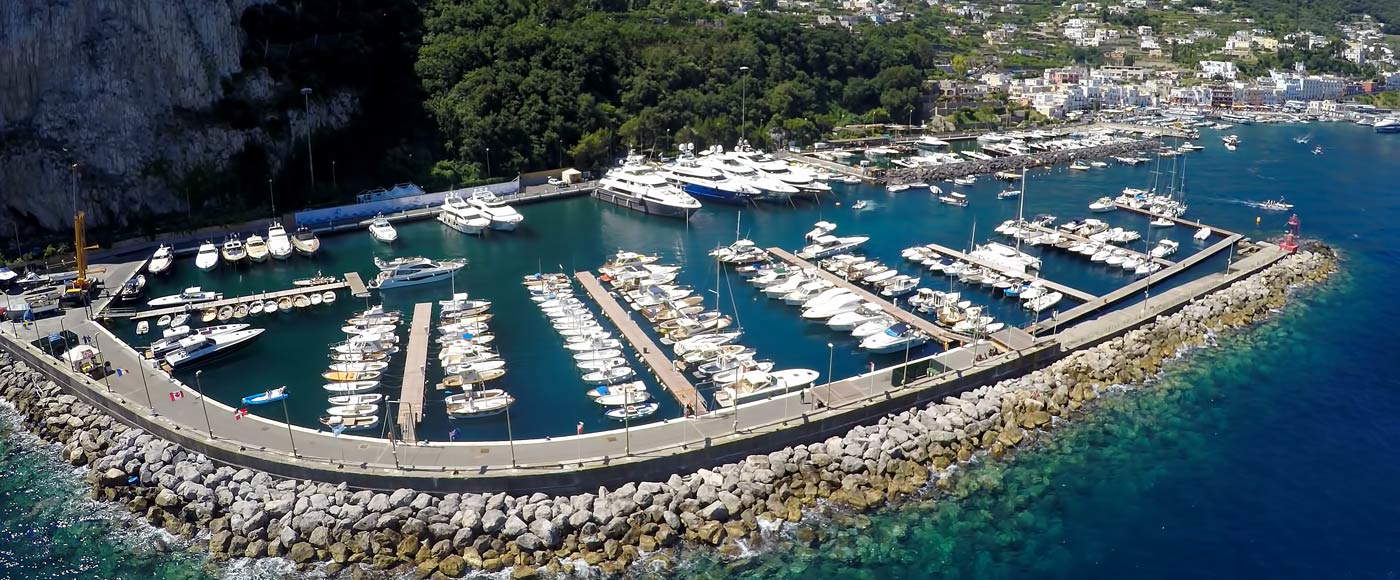
 |
| Capri, what to see: the 10 must-see stops on the island |
Warning: the translation into English of the original Italian article was created using automatic tools. We undertake to review all articles, but we do not guarantee the total absence of inaccuracies in the translation due to the program. You can find the original by clicking on the ITA button. If you find any mistake,please contact us.